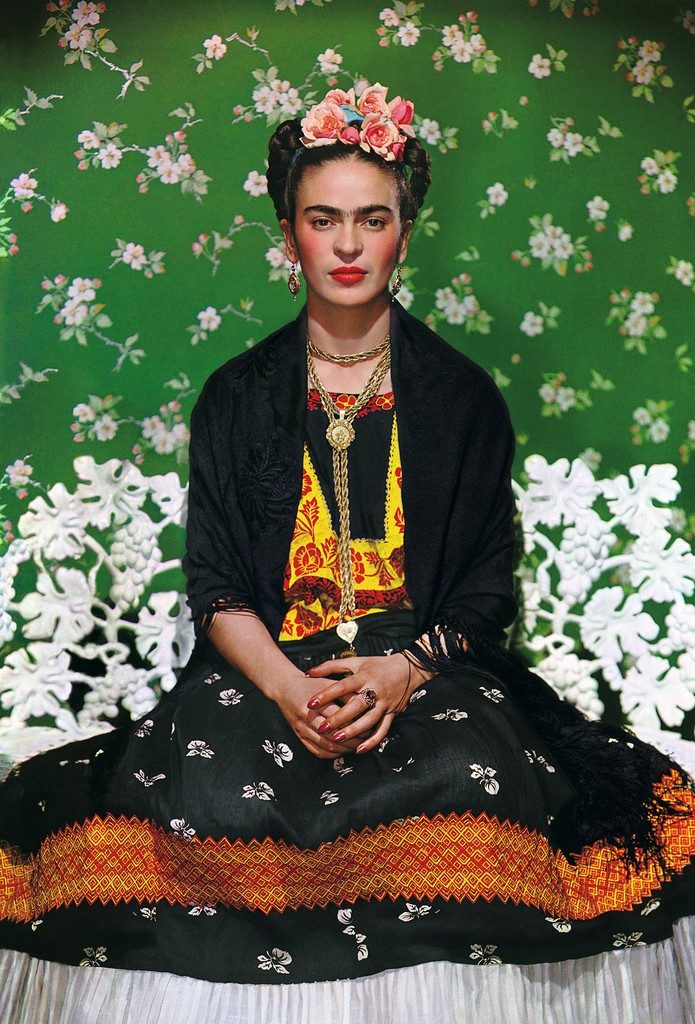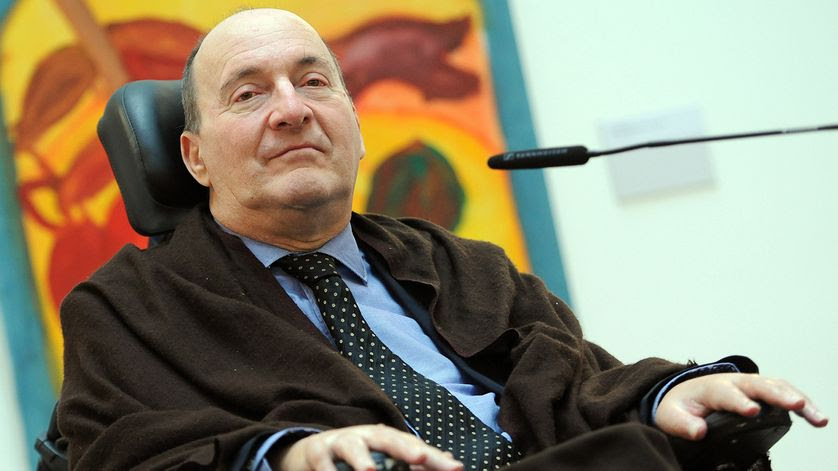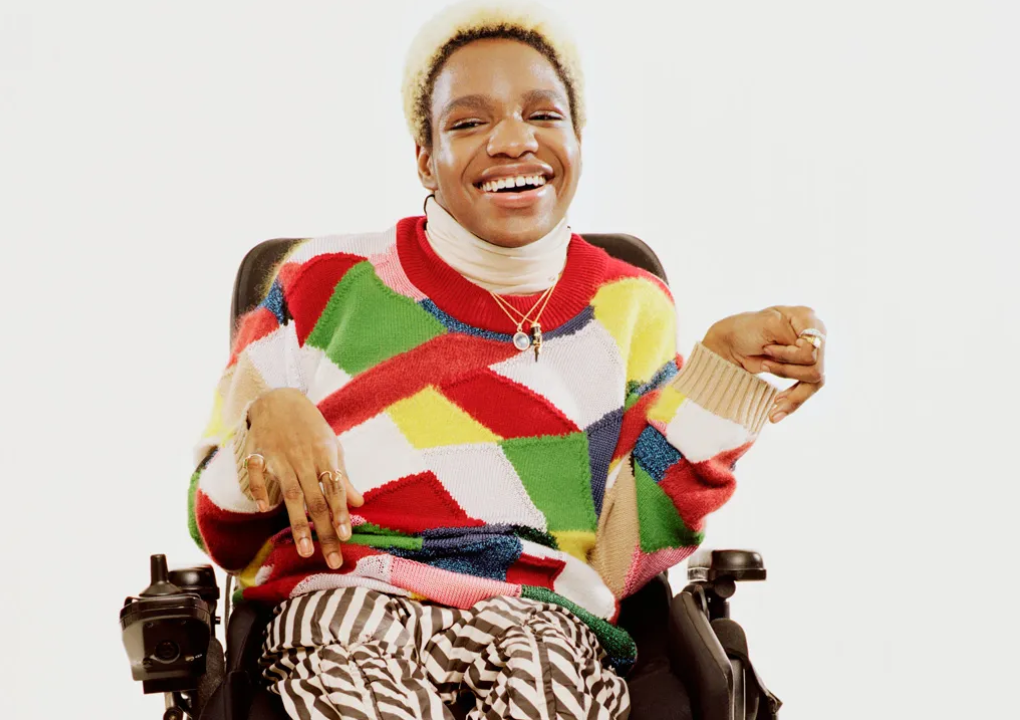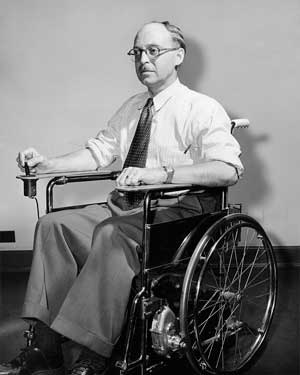
Dear Reader
Disability is written out of history either by ignoring the contributions of persons with disability or by separating their disability from their contributions. This issue highlights artist Frida Kahlo, Phillipp Pozzo di Borgo whose autobiography A Second Wind was made into the popular film The Intouchables, teenage model sensation Aaron Philp, Lenín Moreno, President of Ecuador and George Klein inventor of the electric wheelchair. Please send your comments and suggestions via this form. And if you like what you’re reading do spread the word.
Thanks – Al
This week in history ...

On February 14th, Philippe Pozzo di Borgo was born (1951). Di Borgo a wealthy French businessman became paralyzed in a paragliding accident in 1993. His relationship with his ex-con caregiver was the focus of the most successful French movie ever made, The Intouchables. Di Borgio interviewed 90 people before choosing Abdel Sellou to be his personal attendant. He chose Sellou because, “He didn’t feel sorry for me. He was irreverent, cheeky and had an outrageous sense of humour.”
The exploits portrayed in the movie are largely true. Sellou would speed through the streets of Paris driving di Borgo’s Rolls Royce. On one occasion the police pulled them over. Sellou made up the excuse that they were speeding because di Borgo was having a seizure. Instead of a ticket, the police escorted them to the closest hospital.
Di Borgo described Sellou as his “guardian devil.” “I suddenly found I was enjoying life again,” he said. “He treated me like I needed to be treated in the tough times ahead, I needed to be back on track. Pity is the last thing you need. Pity is hopeless. Pity is what someone gives you because he is afraid to take care of you.”
Di Borgo attributes the success of The Intouchables to the fact that, “All people are dependent on each other. Handicapped people can play the role of the guardian because they remind us of the finiteness of life. We’re not always beautiful, athletic, immortal. We are – the older we become – fragile.”

On February 16 2016 Aaron Philip’s book “This Kid Can Fly: It’s About Ability (NOT Disability)” was published. At the time Philip was 14 years old. The book tells the story of her family immigrating to the Bronx from the island of Antigua to find better medical options for her. They lived for two years in a homeless shelter because of her expensive medical bills. She wrote the book, “to help people understand that just because you have to use a wheelchair to get around or have a physical disability, it doesn’t mean you can’t dream like other kids. You still have talents and desires. This chair that I use to get around doesn’t define me or what I do in life.”
Aaron (pronounced A-Ron) became a teen sensation a few years later becoming the first disabled, gender-nonconforming, trans woman of colour to land a magazine cover. Aaron has cerebral palsy and uses a wheelchair.
Her ambition to become a model was sparked by a magazine cover that pictured non-disabled model Kylie Jenner in a wheelchair. It made her determined to shift the image of disabled people from fetish to that of muse. “I’d like to show the world that muses can be Black, physically disabled, trans and accomplish big things as models if we’re given the attention and platform,” she said.
Philip points out that clothing matters to trans people in a way cisgender people take for granted. “The way we choose to dress, as trans people, directly affirms and presents our gender identities and expressions to the public in a way that is unique. It’s precious and beautiful to many of us,” she says.

On February 19th 2017 Lenín Moreno was elected President of Ecuador becoming, at the time, the world’s only head of state to use a wheelchair. Moreno’s disability is the result of being shot in the back in a 1998 robbery while he was buying bread with his wife. Throughout his political career he has been a staunch advocate for people with disabilities in Ecuador. He significantly increased the budget for disability income and supports, embedded the rights of disabled people in the constitution, installed curb cuts throughout the country and mandated companies to hire people with disabilities. Moreno was nominated for a Nobel Peace Prize for the transformation he brought about for people with disabilities in his country.
Moreno describes his disability as a blessing. “When you don’t have legs, you look down, ” he told an interviewer. He says people who walk tend to look upward. “That’s what I learned: that there’s another life, another existence, that there are other human beings that need a lot from us. For me, this was a novel experience that I thank God for.” Before being elected President of Ecuador Moreno served as the United Nations Special Envoy for Disability and Accessibly. “Solidarity – not as charity, but rather as recognition of others as equals – is the basic pillar for initiating social inclusion,” he wrote in 2012.
Did you know?

The electric wheelchair was invented by Canadian George Klein (pictured above) for the large number of veterans with spinal cord injuries returning from the Second World War. Klein’s prototype included the joystick, a tighter turning system and separate wheel drives which are still features of electric wheelchairs nowadays. The Klein Chair as it was then known was given patent free to the US Department of Veteran Affairs to encourage mass production. The strategy worked. Within a few years the electric wheelchair became available to civilians one of whom was Ed Roberts the father of the Independent Living movement. Roberts decided to use an electric wheelchair because he fell in love. “I learned how to drive a power wheelchair in one day. I was so motivated … She jumped onto my lap, and we drove off into the sunset —or to the closest motel,” Roberts said.
Klein is considered the most prolific Canadian inventor of the twentieth century. His other inventions include the Canadarm used by space shuttles, a microsurgical staple gun and aircraft skis for bush planes. His prototype wheelchair was kept at the Smithsonian in Washington for years, but returned to Canada in 2004 and is now part of the Canada Science and Technology Museum in Ottawa
